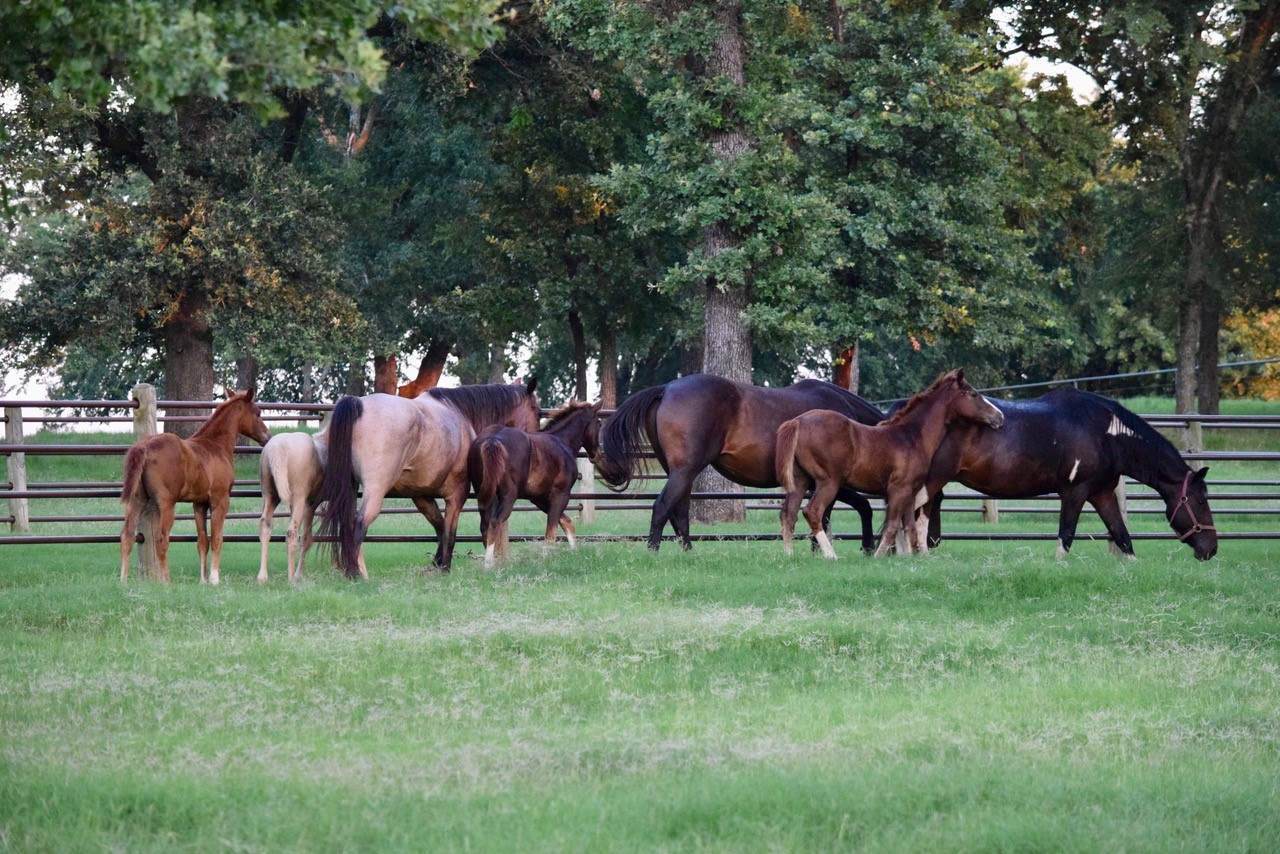
It’s easy to forget about your pastures when they’re covered over with snow, but taking care of your fields year-round is essential. The natural process of
grazing and consuming forage is crucial to your horse’s digestive system and overall health — and ensuring the correct balance of grasses and herbs is critical to help your horse be at his best.
In Pasture Management for Healthy Horses, we’ll walk through three aspects of pasture management to aid your horse’s health and nutrition: seed mixes, repair, and grazing management. In Part 1, we’ll discuss the proper balance of seeds and herbs for optimum nutrition; in Part 2, we’ll address common weeds and how to control them. In Part 3, we’ll talk about good strategies for grazing management to protect pastures. Be sure to subscribe to the SUCCEED blog for tips on how to maintain pastures that support your horse’s nutritional needs.
Evaluate Your Pasture’s Grass Mix
Horses are cecal fermenters, so fiber – the primary component of the equine diet – is digested in the hindgut. Unlike cows, which are ruminants and have a “pre-stomach” to break down low-quality feed first, horses’ digestive anatomy drives them to seek out small, frequent meals of high-quality forage. In the wild, horses naturally pick and choose among forages to find the best-quality blend for optimum health.
As their caretakers, it’s our responsibility to provide a similar variety of grasses and herbs.
Choose an Appropriate Seed Mix
When Freedom Farm, the equestrian training and research partner of Freedom Health, reseeded its fields several years ago, we incorporated ideas from Christopher Day’s book,
A Guide to Herbs for Horses. The following grasses are suitable for a Zone 5 or Zone 6 growing zone, including Freedom Health’s northeast Ohio location.
Cool-Season Grasses to Plant to Aid Nutrition
These long-living grasses include
Kentucky bluegrass,
orchardgrass,
reed canarygrass,
smooth bromegrass, cocksfoot or
timothy and provide an ongoing source of nutrition. Bluegrass tolerates close grazing down to two inches, so is a good choice for heavily used pastures. Cool-season pasture grasses begin growing early and are great producers in May and June. Don’t forget to keep a close eye on your
horse’s grazing time during the months when grass is high in fructans.
Legumes —
Legumes are a cool-season crop characterized by their edible pod, and include
alfalfa,
clover, vetch, and
birdsfoot trefoil. They’re an important part of any seed mix because they provide twice the amount of easy-to-digest dietary protein as grass. Legumes also contain many essential amino acids, provide edible oils and fibers, and are quick growing. As an added benefit, when legumes are mowed and allowed to decompose, they release nitrogen that aids grass production.
Warm-Season Grasses to Plant to Aid Nutrition
Since perennial warm-season grasses are productive even during the warm and dry mid-summer months, they can be a good source of nutrition for your horse during a drought. Other advantages include fast germination, rapid growth, and high productivity.
Crabgrass and pearl millet are good warm-season grasses since they have strong root systems, but sorghum species should be avoided.
Herbs and Other Additions to your Pastures
Rye grass is high in nutrients, but low in carbohydrates, which makes it a good choice for overweight horses. You can also incorporate herbs like Sheep’s Parsley, which is mineral-rich and high in iron and Vitamin C. Chicory is also highly digestible and high in minerals like calcium, sulfur, potassium, and zinc.
Meeting Your Horse’s Nutritional Needs through High-Yielding, Appropriate Pasture Mixes
Most agricultural experts suggest at least 2 acres for each horse grazing on a pasture, as a well-nourished horse will consume about two percent of its body weight per day. Most horse owners need to supplement grazing with hay,
chaff or other sources of feed, but a well-maintained pasture can go a long way toward meeting your horse’s nutritional needs.
When you’re ready to reseed,
consult this handy PDF on how to reseed from the University of Kentucky, or turn to your
local agricultural extension office for additional information. Extension offices are staffed with agricultural experts who can provide advice and resources for landowners and farmers. Your extension agent can help determine your
growing zone and can help you
test your soil’s pH. You’ll need to know that information before you can put together an appropriate seed mix.
Up Next: Weed Control for Healthy Pastures
Once reseeded, your fields will require ongoing maintenance to keep unhealthy weeds like burdock out of your fields. Tune in to
Part 2 of Pasture Management for Healthy Horses: Weed Control by
subscribing to the SUCCEED blog to keep up with field management for healthier digestive systems.
 It’s easy to forget about your pastures when they’re covered over with snow, but taking care of your fields year-round is essential. The natural process of grazing and consuming forage is crucial to your horse’s digestive system and overall health — and ensuring the correct balance of grasses and herbs is critical to help your horse be at his best.
In Pasture Management for Healthy Horses, we’ll walk through three aspects of pasture management to aid your horse’s health and nutrition: seed mixes, repair, and grazing management. In Part 1, we’ll discuss the proper balance of seeds and herbs for optimum nutrition; in Part 2, we’ll address common weeds and how to control them. In Part 3, we’ll talk about good strategies for grazing management to protect pastures. Be sure to subscribe to the SUCCEED blog for tips on how to maintain pastures that support your horse’s nutritional needs.
It’s easy to forget about your pastures when they’re covered over with snow, but taking care of your fields year-round is essential. The natural process of grazing and consuming forage is crucial to your horse’s digestive system and overall health — and ensuring the correct balance of grasses and herbs is critical to help your horse be at his best.
In Pasture Management for Healthy Horses, we’ll walk through three aspects of pasture management to aid your horse’s health and nutrition: seed mixes, repair, and grazing management. In Part 1, we’ll discuss the proper balance of seeds and herbs for optimum nutrition; in Part 2, we’ll address common weeds and how to control them. In Part 3, we’ll talk about good strategies for grazing management to protect pastures. Be sure to subscribe to the SUCCEED blog for tips on how to maintain pastures that support your horse’s nutritional needs.



